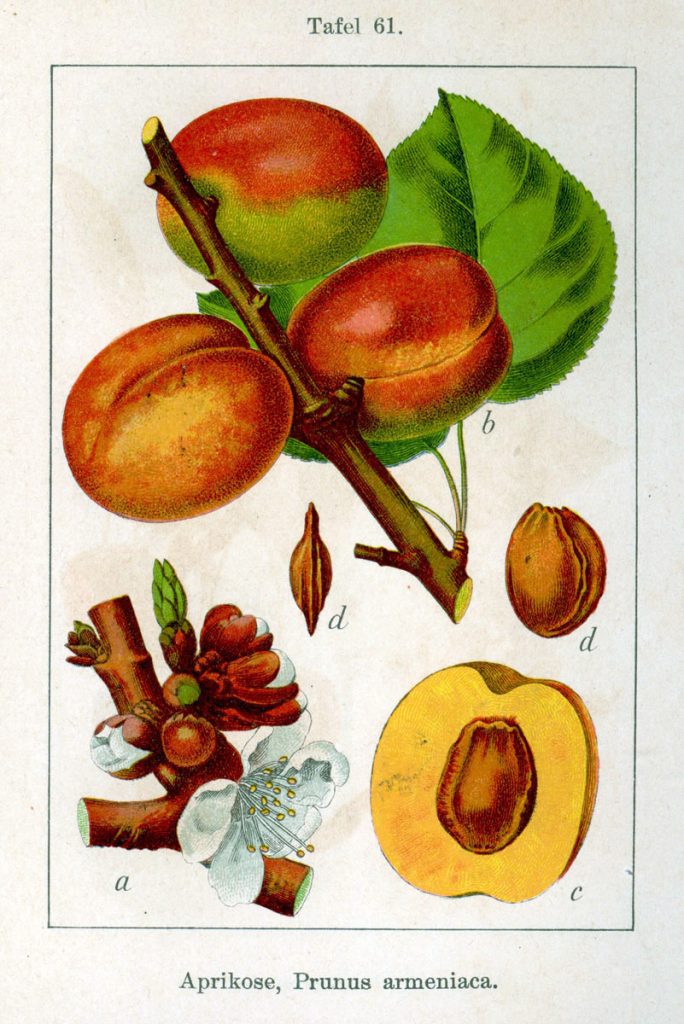
This deciduous small tree is a member of the rose family, Rosaceae, that also includes cherry, almond, and lady’s mantle. It’s origin is uncertain but it was extensively cultivated in prehistoric times and is probably from Central Asia and may have been introduced to Greece by Alexander the Great. The ancient Roman naturalist, Pliny the Elder (d. 79 AD), calls it praecocia from which we get the common name apricot, and praises its sweet scent. He also tells us that the apricot was a recent imported from Asia and that it originally fetched 1 denarius each (according to Wikipedia, 1 denarius was the daily pay of a soldier at that time and so was about $20 in our money today). A fresco from the ancient Pompeii area now in the Naples Museum shows fruits that are probably apricots suggesting that apricots were known to the ancient Pompeiians. Photo Credit Wikimedia Commons
Description: The trees grow 26-39′ tall and have a dense, spreading canopy of ovate leaves 2-3.5″ long, with toothed margins and 2 small glands at the base of the blade. In early spring before the leaves appear, white to pinkish flowers appear singly or in pairs. They have 5 petals and give way to fruits called drupes that are fleshy, yellow to orange tinted with red, each with a single seed enclosed in a hard ridged stony shell.
Size: 26-39′ H
Light: Full sun
Soil: Average, moderately moist, well-drained
Hardiness: Zones 5-8 (but may not produce fruit reliably because of damage to flower buds by early frost)